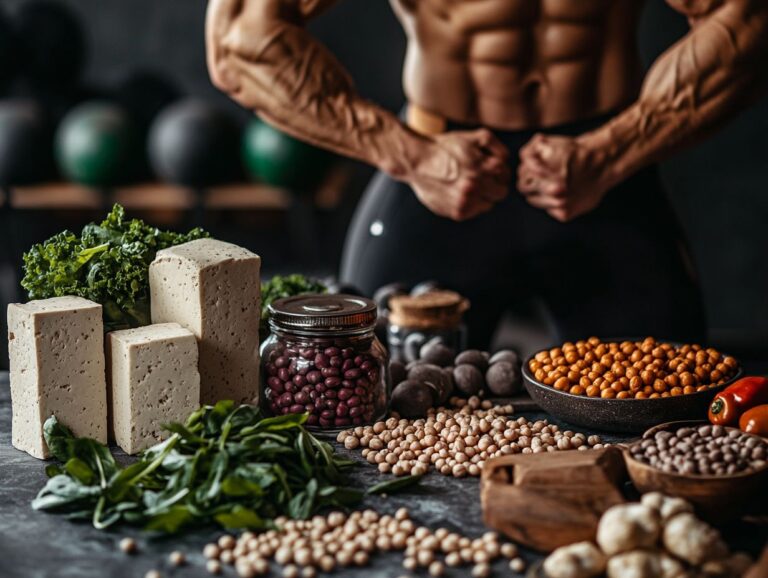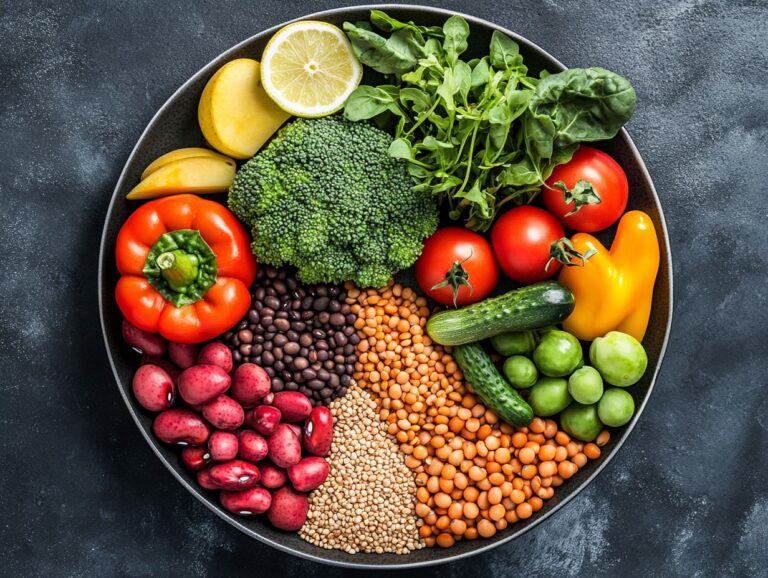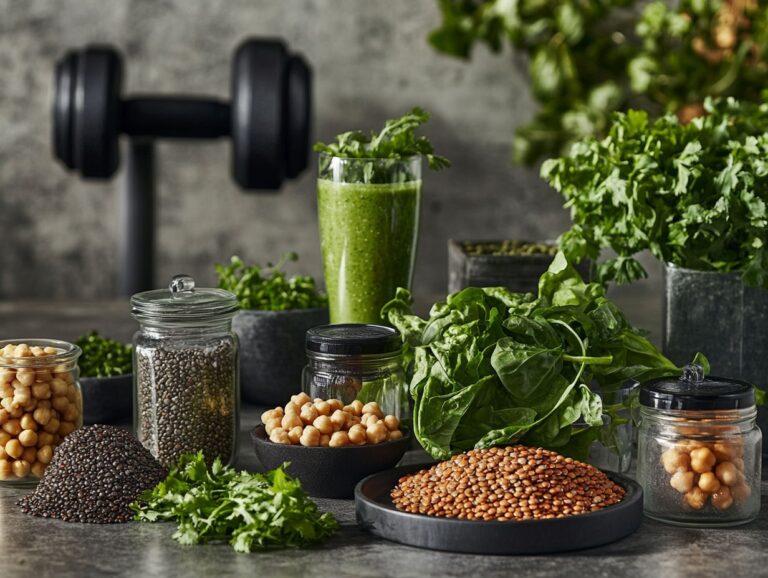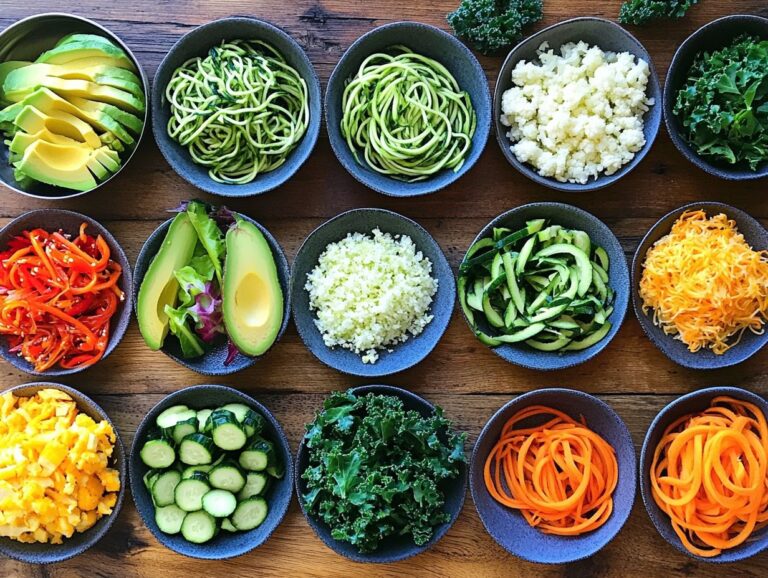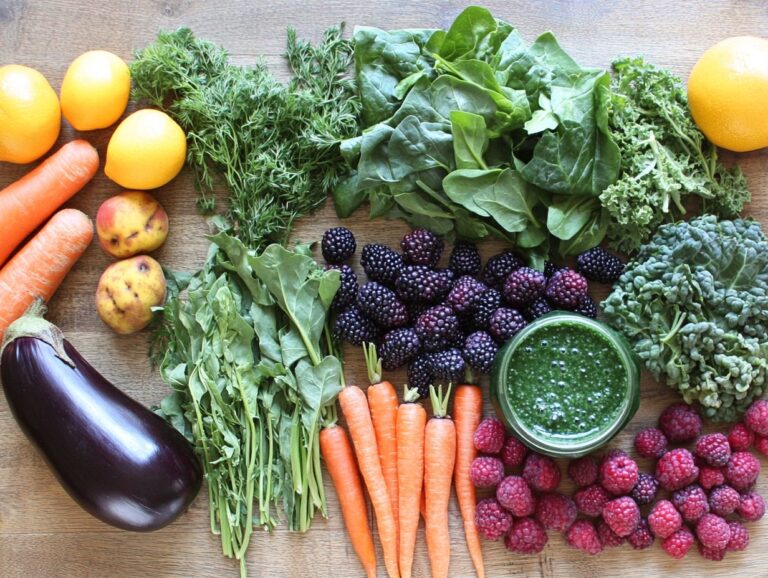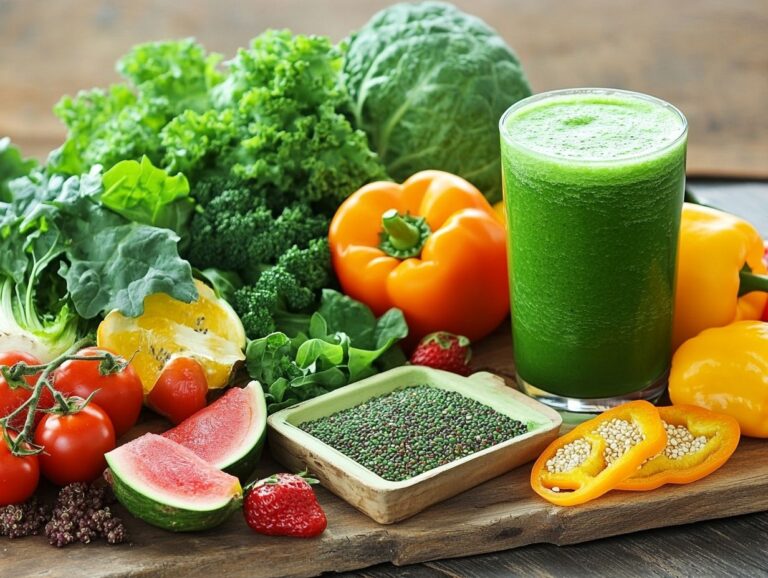Making dietary choices can be difficult, particularly for those dealing with digestive disorders. A vegan low-residue diet presents a unique approach that caters to plant-based preferences while promoting healing and aiding digestion, especially beneficial for individuals with specific gastrointestinal conditions such as Crohn’s disease and diverticular disease. This guide will explore the purpose of a low-residue diet, examine the permitted foods and their nutritional benefits, and outline what to avoid for optimal gut health, including important dietary guidelines for managing fiber intake and avoiding potential complications like bowel surgery or resection. Additionally, it includes practical tips for meal planning and symptom management, serving as a valuable resource for successfully adopting a vegan low-residue lifestyle, which can be particularly useful for those preparing for colonoscopy or managing inflammatory bowel disease.
Key Takeaways:
- A vegan low residue diet is a type of diet that limits high-fiber foods to help with healing and digestion.
- This diet focuses on plant-based proteins, fats, and carbohydrates to provide essential nutrients and promote gut health, while adhering to veganism principles.
- Some tips for following this diet include meal planning, ensuring nutrient intake through adequate protein sources, and managing symptoms to stay on track for better digestive health.
What is a Low Residue Diet?
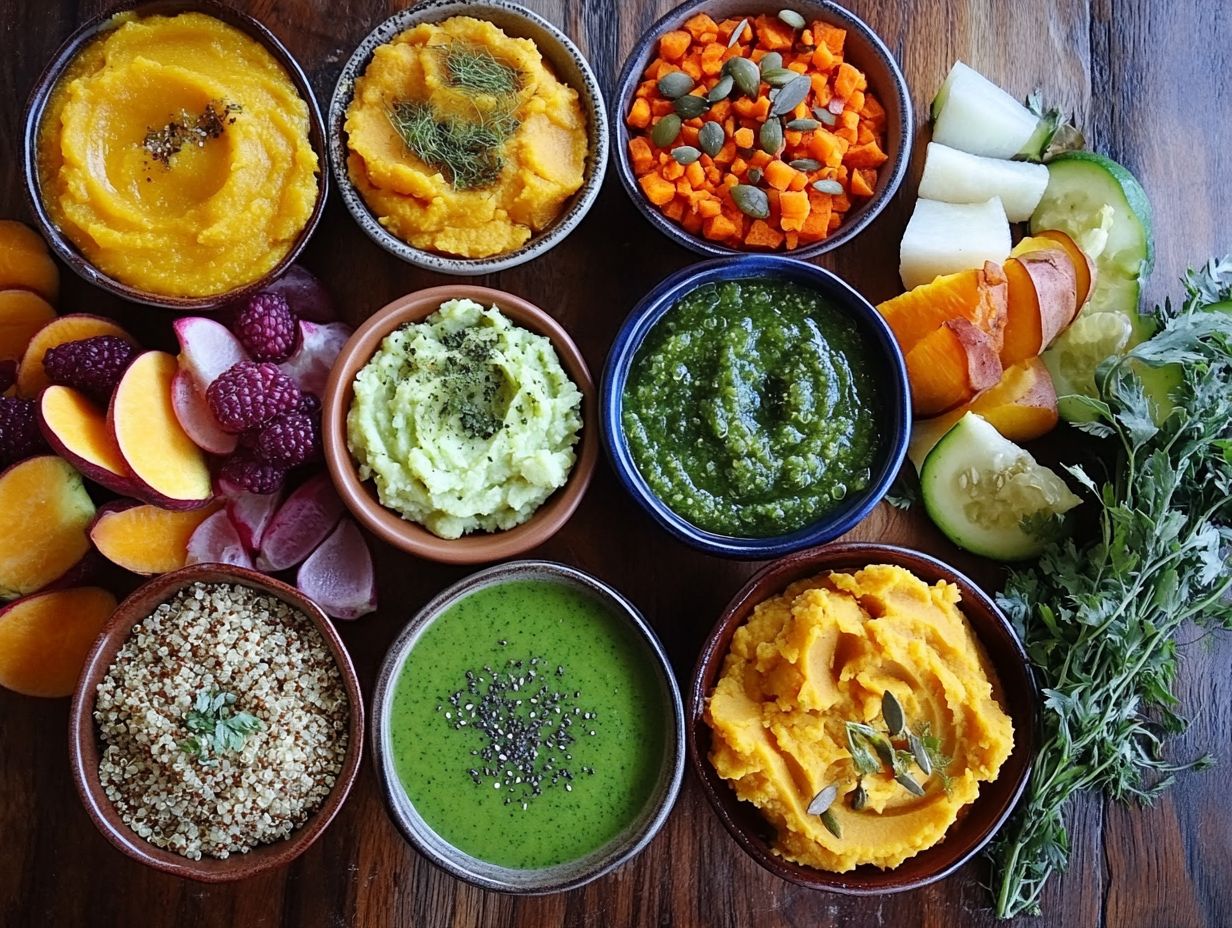
A low-residue diet is a specialized dietary plan designed to minimize the amount of undigested food that reaches the large intestine, often recommended by healthcare providers. This diet is particularly important for individuals with gastrointestinal diseases, such as Crohn’s disease and diverticular disease, as well as for those scheduled for a colonoscopy or colon cancer screenings.
By limiting fiber intake, a low-residue diet helps reduce symptoms associated with digestive disorders and promotes better digestive health. Through a combination of food recommendations and dietary restrictions, individuals can effectively manage their symptoms and support a healthy gut microbiome.
What is the Purpose of a Low Residue Diet?
The primary goal of a low-residue diet is to reduce the frequency and volume of fecal output, which helps manage symptoms of various gastrointestinal disorders, such as Crohn’s disease and diverticular disease, and prepares patients for tests like colon cancer screenings or colonoscopy prep.
By limiting the intake of high-fiber foods, this diet minimizes colonic irritation, providing relief for individuals experiencing flare-ups or acute gastrointestinal distress, which is common in conditions such as inflammatory bowel disease.
Those following a low-residue diet often report increased comfort and lower complication rates during recovery, whether from chronic gastrointestinal conditions or post-operative recovery after procedures like bowel surgery or ileostomy and colostomy.
What Foods Are Allowed on a Vegan Low Residue Diet?
A vegan low-residue diet consists of nutritious, plant-based food options that are low in residue and fiber. This diet is designed for patients who adhere to a vegan lifestyle, ensuring they meet their nutritional needs without compromising their beliefs, by following vegan diet principles.
A vegan low-residue diet emphasizes easily digestible foods, which are often prepared using gentle cooking methods such as steaming and boiling to further minimize fiber intake and reduce gastrointestinal irritation, taking into consideration individual dietary restrictions.
Careful food recommendations allow patients to maintain their health while enjoying a varied diet, while also considering potential nutrient deficiencies.
What Are the Best Vegan Protein Sources on a Low Residue Diet?
In a vegan low-residue diet, tofu, tempeh, and certain legumes serve as excellent protein sources, helping to maintain adequate protein intake while reducing fiber consumption, thus adhering to specific dietary guidelines.
These foods provide the necessary amino acids and can be easily incorporated into a variety of meals, fitting into diverse meal plans. Tofu can be stir-fried, blended into smoothies for a creamy texture, or scrambled. Tempeh, a fermented soy product with a nutty flavor, is ideal for grilling or adding to salads.
While these proteins can be included in the diet, it is essential to monitor the balance between meeting protein requirements and adhering to low-residue guidelines, as overconsumption of some legumes may increase fiber intake, potentially impacting digestive health.
This imbalance can lead to potential nutrient deficiencies, particularly in iron and certain B vitamins, if not properly balanced with other low-residue, nutrient-dense foods, requiring attention to nutritional supplements and probiotics.
What Are the Best Vegan Fat Sources on a Low Residue Diet?
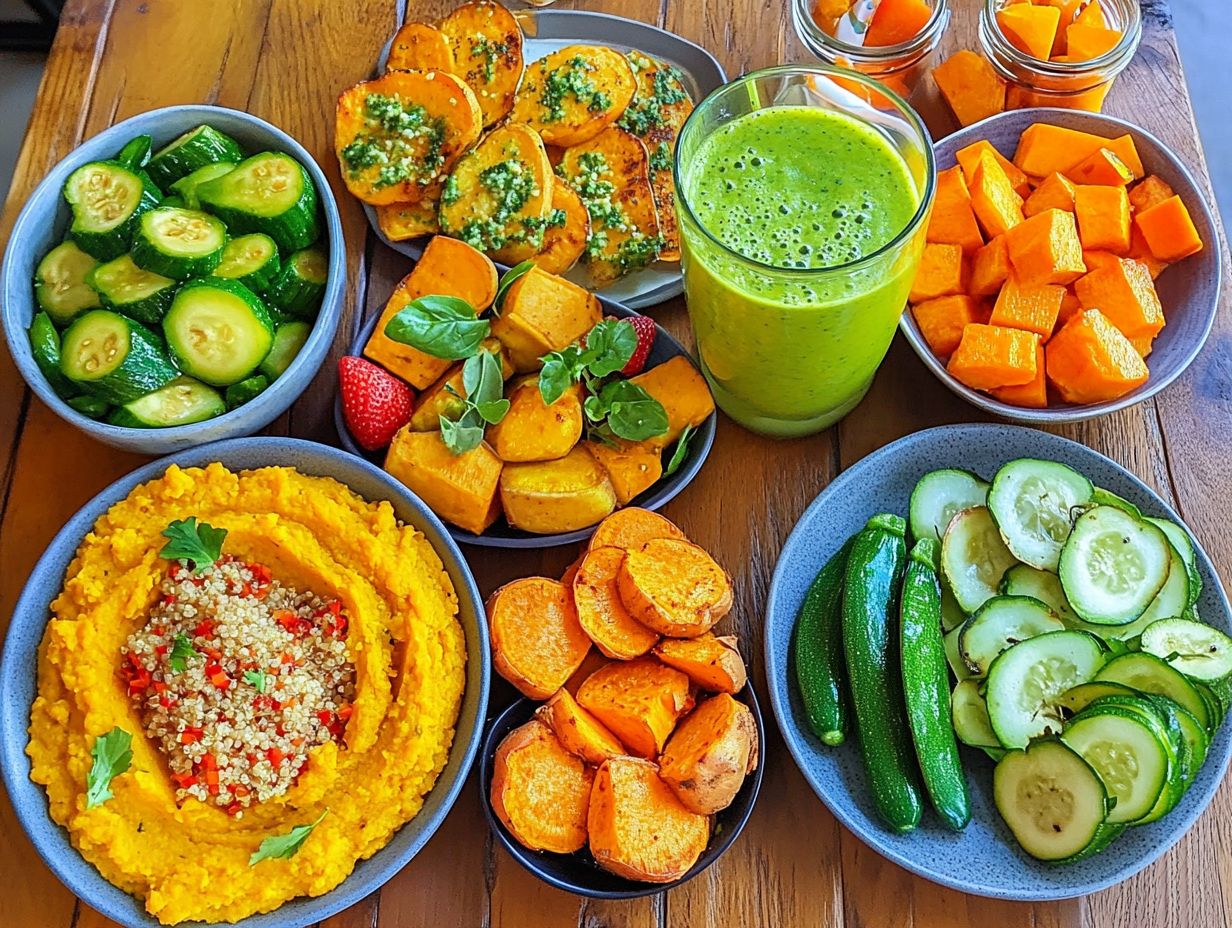
Healthy fats are vital components of a vegan low-residue diet. Avocados, olive oil, and nut butters serve as excellent sources of fats that provide essential fatty acids without adding significant amounts of fiber, which can be detrimental for individuals on low-fiber diets.
Incorporating healthy fats is often both easy and delicious, and essential for overall digestive health. Creamy avocados can be blended into smoothies or spread on whole-grain toast, creating a meal that is both nutritious and low in fiber. Olive oil, rich in monounsaturated fats, can be drizzled over steamed vegetables or used as a base for salad dressings, enhancing flavor without negatively impacting digestion.
Almond or cashew nut butter adds rich flavors and can be stirred into oatmeal or used as a dip for soft fruits, providing healthy fat sources while considering food choices. Healthy fats not only enhance the palatability of meals but are also critical for the proper absorption of nutrients, making them essential for those following low-residue meal plans.
What Are the Best Vegan Carbohydrate Sources on a Low Residue Diet?
The best carbohydrate sources and preparations for a vegan low-residue diet include refined grains, white rice, and certain cooked vegetables that provide energy and nutrients without increasing fiber intake, which can irritate the digestive system.
In particular, options such as white bread, pasta, and polenta are ideal because they are low in fiber and easily digestible, fitting well into a vegan low-residue diet. Thoroughly cooking foods is essential to break down their structure and further reduce their fiber content.
For instance, cooking carrots and zucchini until they are soft can enhance their digestibility and make them gentler on the stomach. By incorporating these carbohydrate sources, individuals can maintain sustained energy levels while minimizing discomfort, promoting a balanced nutritional approach that is easy on the digestive tract, complementing the BRAT Diet or FODMAP approaches.
What Foods Should Be Avoided on a Vegan Low Residue Diet?
On a vegan low-residue diet, it is important to avoid foods that are high in fiber, as their consumption can exacerbate gastrointestinal discomfort and related conditions, such as inflammatory bowel disease and diverticular disease.
For instance, fiber-rich foods like whole grains, raw fruits, and cruciferous vegetables can worsen symptoms and may be challenging to include in an effective nutritional management plan, particularly for those dealing with digestive disorders like inflammatory bowel disease.
Therefore, strict adherence to these dietary restrictions is essential for effective management, which should be coordinated with a healthcare provider.
What Are the Worst Foods for Digestion on a Low Residue Diet?
Certain foods can be particularly detrimental to digestion on a low-residue diet. High-fiber items such as whole grains, seeds, and raw vegetables can increase bowel movements and cause discomfort for individuals with digestive disorders, especially those with inflammatory bowel disease.
Fruits like berries, apples, and pears, which are often praised for their healthy fiber content, can also worsen symptoms due to their skins and seeds. Starchy vegetables, including corn and peas, may contribute to gas and bloating, complicating the digestive process further, requiring careful food choices.
Additionally, dairy products, particularly full-fat varieties, can pose challenges for those with lactose intolerance, resulting in diarrhea and cramping. By avoiding these foods, individuals can better achieve the goals of a low-residue diet, which focuses on minimizing bowel irritation and promoting a smoother digestive experience, ultimately supporting better digestive health.
What Are the Most Common Food Allergens on a Low Residue Diet?
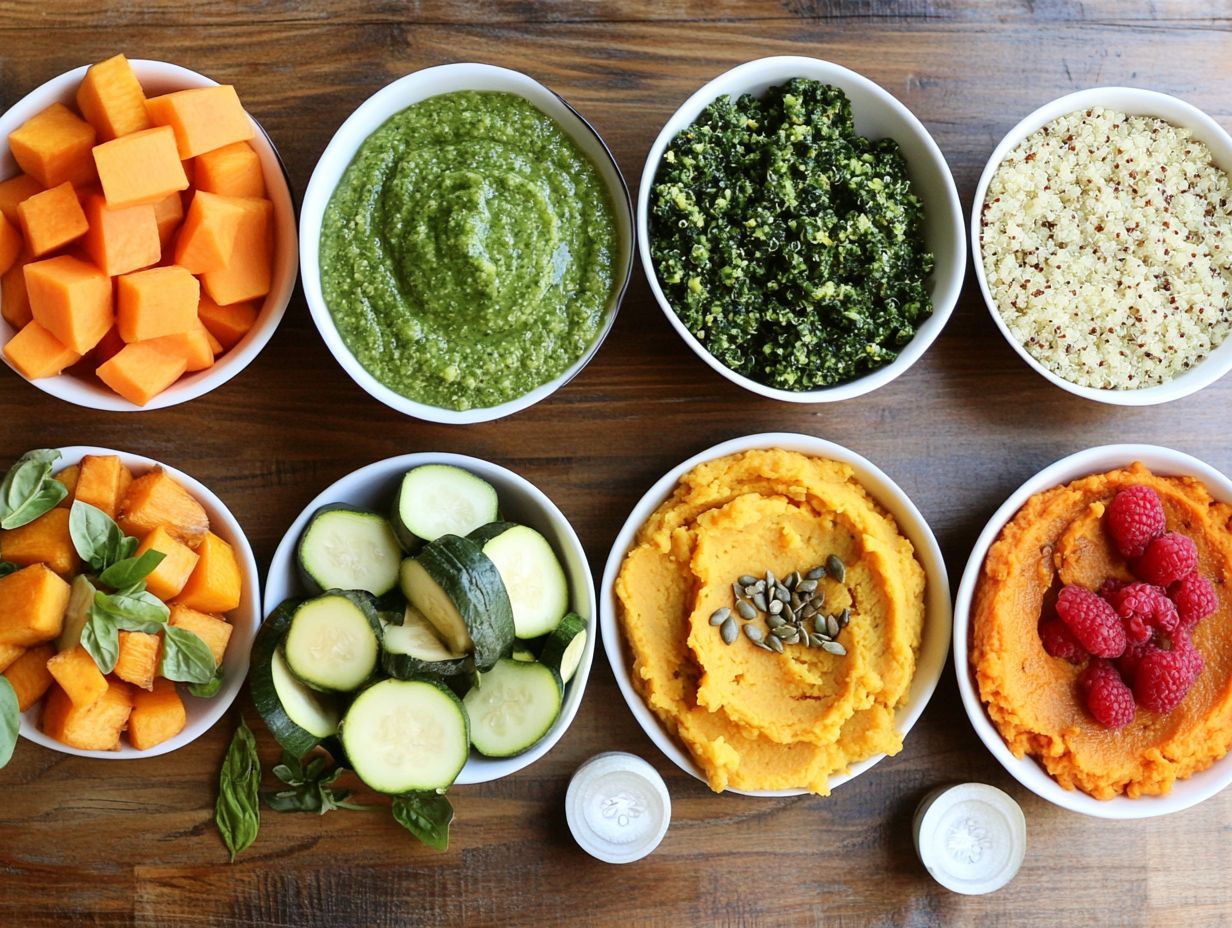
Common food allergens, such as dairy, soy, nuts, and gluten, can complicate adherence to a low-residue diet, particularly for individuals with digestive disorders. This situation necessitates a careful selection of compliant foods that respect both dietary restrictions and nutritional needs.
Successfully navigating these challenges requires a balanced approach to meal planning and food choices, ensuring that essential nutrients are not sacrificed while avoiding allergens. For those affected, exploring alternative protein sources like legumes, which are low in residue and hypoallergenic, can be beneficial.
Additionally, incorporating a variety of fruits and vegetables that are less likely to irritate the digestive tract can provide essential vitamins and minerals, aligning with broader food recommendations. Consulting with a nutritionist specializing in food allergies can assist in formulating a customized meal plan that aligns with both allergen avoidance and low-residue principles, ultimately supporting overall health while managing digestive comfort.
How Does a Vegan Low Residue Diet Help with Healing and Digestion?
A vegan low-residue diet can enhance healing and digestion for individuals with various gastrointestinal conditions by providing a balanced framework that reduces fiber intake while ensuring adequate nutrient absorption, aiding in the management of inflammatory bowel disease and other digestive disorders.
This dietary approach promotes digestive health by decreasing the burden on the digestive tract, which allows for improved nutrient absorption and supports a healthier gut microbiome.
What Are the Benefits of a Low Residue Diet for Digestive Disorders?
A low residue diet offers several benefits for individuals with digestive disorders, including reduced symptoms and discomfort, enhanced nutrient absorption, and improved overall digestive health, facilitated by appropriate dietary guidelines.
This dietary approach is particularly advantageous for those with inflammatory bowel disease or those preparing for procedures such as colon cancer screenings or colonoscopy.
By minimizing the intake of fiber and certain foods that may irritate the gastrointestinal tract, a low residue diet can lead to fewer flare-ups and a more manageable experience for individuals dealing with conditions like Crohn’s disease or ulcerative colitis, improving overall digestive health.
Healthcare providers often observe that adherence to a low residue diet can result in a significant decrease in abdominal pain, bloating, and diarrhea, thereby allowing patients to enjoy a better quality of life. This can be particularly beneficial for those preparing for a colonoscopy or dealing with gastrointestinal conditions such as Crohn’s disease and diverticular disease.
Many patients express relief when following this diet, frequently sharing testimonials that highlight their gratitude for being able to engage in daily activities without the constant burden of digestive issues.
How Does a Low Residue Diet Help with Inflammation, Digestive Health, and Gut Health?
A low-residue diet can help reduce inflammation and promote overall gut health by minimizing the intake of irritants and emphasizing easily digestible foods. This approach is instrumental in maintaining digestive health, allowing the gastrointestinal tract to heal and function more effectively.
By lowering fiber intake and avoiding specific food irritants, individuals can experience a significant reduction in gut irritation, leading to decreased inflammation. This dietary change not only supports healing for those managing chronic digestive disorders, such as irritable bowel syndrome or inflammatory bowel disease, but also enhances nutrient absorption and digestive health.
When the digestive system is less burdened by complex fibers and other problematic components, the body can concentrate on self-repair, promoting a more balanced gut microbiome, preventing gastrointestinal disorders, and improving overall digestive comfort.
Implementing this approach may lead to better health outcomes and an enhanced sense of well-being. Additionally, it can serve as a preparatory measure for those undergoing procedures like bowel surgery and colonoscopy prep, ensuring a cleaner colon for more accurate results.
What Are Some Tips for Following a Vegan Low Residue Diet and Ensuring Adequate Nutritional Needs?
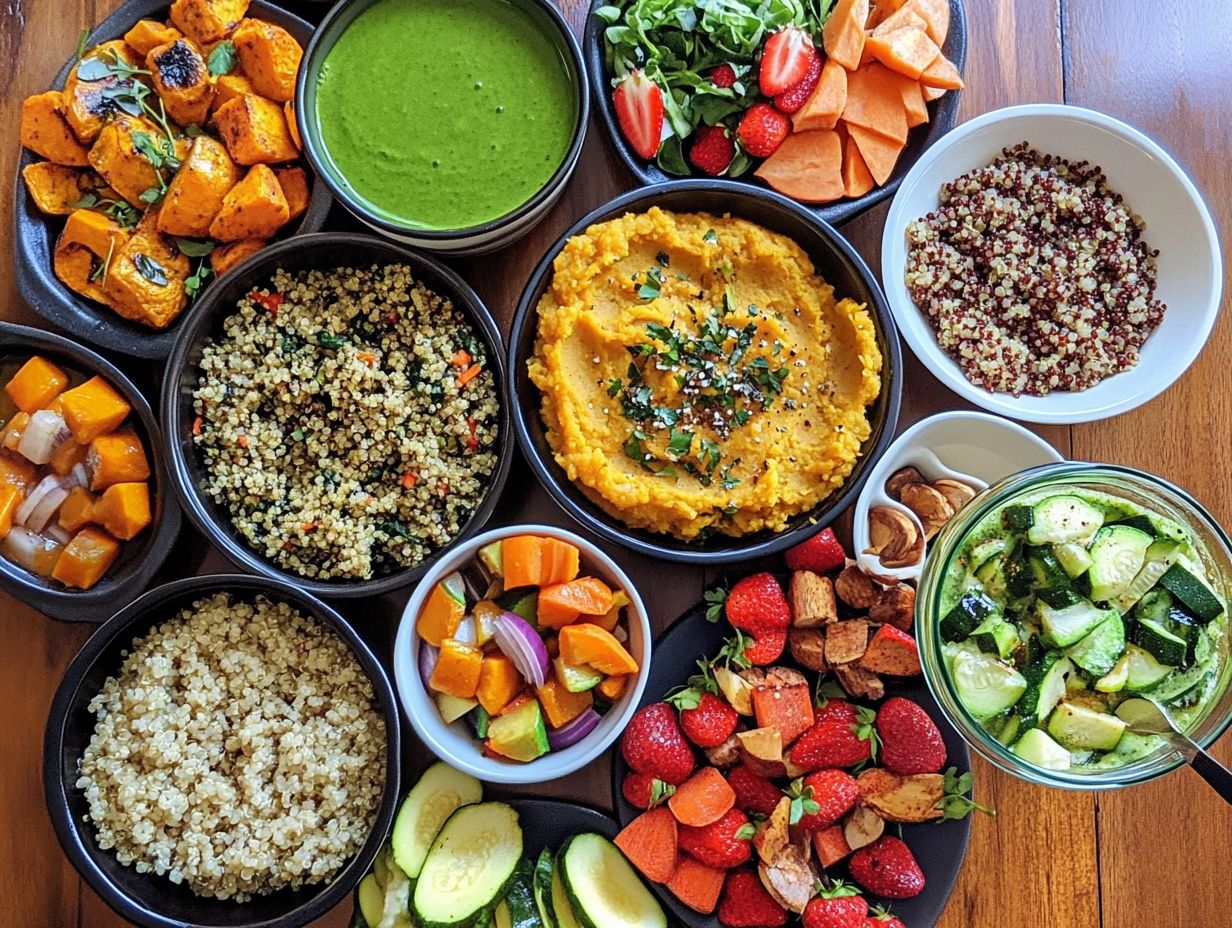
A vegan low-residue diet can be both successful and enjoyable when it involves proper meal planning, suitable food choices, and gentle cooking methods that enhance the digestibility of food while meeting dietary requirements. This approach aligns with veganism and plant-based diet principles, allowing individuals to adhere to dietary restrictions without compromising on essential nutrients.
How to Meal Plan for a Vegan Low Residue Diet?
A vegan low-residue diet meal plan is developed by selecting foods that are low in fiber while ensuring that all other essential nutrients are included. It is important that the chosen foods adhere to the requirements of both the vegan and low-residue diets. The creation of this plan begins with an understanding of the individual’s specific needs.
- The first step is to select foods that meet the criteria of both diets, including ingredients such as ripe bananas, potatoes, and refined grains, which are easy to digest and low in residue. This selection should also consider food recommendations and protein sources suitable for a vegan low-residue diet.
- Next, create a grocery list organized into categories such as fruits, vegetables, grains, and protein to facilitate shopping.
For cooking, consider batch cooking to save time throughout the week. Roasting, boiling, or steaming vegetables and grains can help maintain their necessary texture while ensuring they remain low-residue. These cooking methods are crucial for preserving the nutritional integrity of the food. When constructing meals, focus on balancing macronutrients by including healthy fats and proteins. Options such as tofu, avocados, and nut butters can help create filling and nutritious meals, catering to both nutritional needs and dietary restrictions.
How to Make Sure You Are Getting Enough Nutrients on a Low Residue Diet?
A low-residue diet can make it challenging to obtain sufficient nutrients, particularly for those following a vegan lifestyle. Therefore, additional care is necessary to prevent nutrient deficiencies while adhering to dietary restrictions. These diets often limit the intake of high-fiber foods, which can lead to inadequate consumption of essential nutrients, including vitamin B12, iron, calcium, and omega-3 fatty acids. To address these concerns, nutritional supplements may be necessary to ensure a balanced diet.
Vitamin B12 is primarily found in animal products, but it can also be obtained from fortified plant milks and nutritional yeast. Iron is present in legumes and dark leafy greens, but its absorption is enhanced when consumed with vitamin C-rich foods such as bell peppers and citrus fruits.
To meet calcium requirements, incorporating fortified tofu or almond milk into daily meals is recommended. For omega-3 fatty acids, supplementation with algae-based products or probiotics may be an appropriate option, contributing to a balanced and healthy gut microbiome.
How to Manage Symptoms and Stay on Track with a Low Residue Diet?
Managing symptoms while following a low-residue diet involves making informed food choices, being proactive about meal planning, and regularly consulting with healthcare providers such as Julie Wilkinson or Jay N. Yepuri, MD, to monitor dietary progress and symptom relief. These consultations can provide personalized dietary guidelines and food recommendations tailored to individual needs.
Advance meal preparation is essential for effectively managing symptoms on a low-residue diet, as it reduces stress and promotes adherence to dietary restrictions. Compiling a list of known trigger foods to avoid is also beneficial, as these can exacerbate symptoms. Following a structured meal plan can further ensure that patients remain on track with their dietary goals.
Raising awareness of how different foods affect the body is crucial, and maintaining a food diary can help identify these factors. Additionally, discussing dietary needs with a healthcare provider ensures a balanced diet while prioritizing symptom management. Regular consultations can also foster a positive and supportive relationship, helping manage conditions like inflammatory bowel disease and ensuring all nutritional needs are met.
